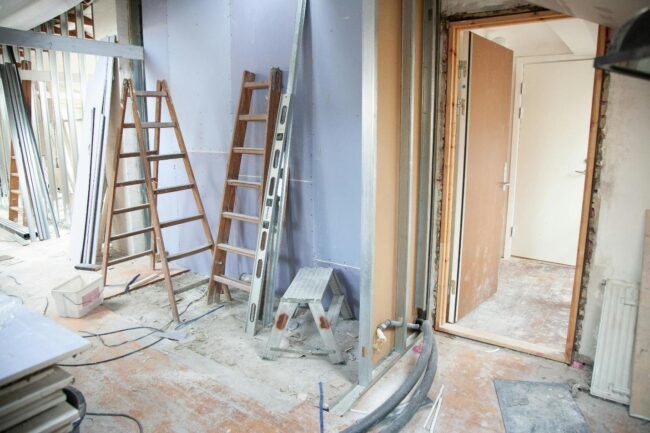
Saving money on utility bills and making homes more comfortable are top priorities for many homeowners. Simple upgrades can make a big difference in maintaining indoor temperatures and reducing unnecessary power usage. Small changes, such as better insulation or updated appliances, help lower costs while improving comfort. Investing in long-term improvements can also add value to a home while reducing maintenance needs.
A well-sealed home is more efficient in both hot and cold months. Properly installed windows, doors, and insulation prevent drafts and keep indoor spaces stable. Whether homeowners are looking for minor fixes or major renovations, the right improvements can significantly reduce waste and increase savings throughout the year.
This article lists some of the best home improvements for energy saving all year round.
Install Proper Insulation
A well-insulated home stays warm in the winter and cool in the summer with less effort. Insulation in walls, attics, and floors prevents outside temperatures from affecting indoor spaces. Without proper coverage, air conditioning and heating systems must work harder to compensate for lost warmth or cool air. Adding or upgrading insulation helps regulate temperatures, making homes more comfortable year-round. Depending on their needs, homeowners can choose from materials like fiberglass, spray foam, or rigid foam boards. Proper installation ensures the best results and long-term savings.
Replace Old Doors
Doors play a crucial role in keeping a home insulated. Older models, especially those made from outdated materials, may allow air to pass through gaps or have poor insulation. Replacing them with modern, well-sealed options improves comfort and lowers heating and cooling costs. For those considering an upgrade, ensure you’re investing in high-quality, insulated entry doors that help prevent heat loss. Professionals like Design Windows and Doors offer the highest quality doors that ensure tight seals, which reduces drafts and improves indoor conditions. Upgrading to a well-insulated door is an easy way to boost efficiency without major renovations.
Upgrade to Energy-Efficient Windows
Older windows allow heat to escape in the winter and let warm air inside during the summer. Poor sealing and outdated glass can make heating and cooling systems work harder, leading to higher costs. Replacing old models with modern, insulated options helps maintain indoor temperatures more effectively. Newer designs feature double or triple-pane glass with low-emissivity coatings, improving temperature control. Many models also include better frame materials that prevent air leakage. These upgrades not only enhance comfort but also reduce monthly utility expenses.
Seal Air Leaks
Small gaps and cracks around windows, doors, and vents allow air to escape. These leaks may seem minor, but they can cause significant temperature fluctuations, making indoor spaces less comfortable and increasing power use. Finding and sealing these openings is a simple yet effective solution. Weatherstripping, caulking, and foam sealants help block unwanted airflow. Checking for leaks around entryways and utility openings ensures a well-sealed home. Regular maintenance helps prevent future problems and keeps indoor spaces at a steady temperature.
Install a Programmable Thermostat
A programmable thermostat helps regulate indoor temperatures without the need for constant adjustments. By setting a schedule, homeowners can ensure that heating and cooling systems run efficiently when needed and use less power when the home is empty. This small upgrade can lead to noticeable savings over time. Smart thermostats take this a step further by learning usage patterns and adjusting settings automatically. Reducing unnecessary heating and cooling prevents excessive wear on HVAC systems, extending their lifespan and lowering maintenance costs.
Use Energy-Efficient Lighting
Traditional light bulbs use more electricity and burn out faster compared to modern alternatives. Replacing them with LED bulbs is one of the easiest and most cost-effective ways to cut down on power usage. LEDs use up to 75% less energy and last much longer than incandescent bulbs. Beyond bulbs, motion-sensor lighting and dimmable fixtures can also contribute to lower power use. Adjusting brightness levels based on the time of day reduces unnecessary consumption while maintaining a comfortable home environment. Making these small changes helps lower electricity bills without sacrificing lighting quality.
Upgrade to Energy-Efficient Appliances
Older appliances often consume more power than necessary. Many newer models are designed to use less electricity while maintaining performance. Replacing outdated refrigerators, dishwashers, and washing machines with energy-saving alternatives helps reduce long-term costs. ENERGY STAR-certified appliances are tested for efficiency and typically use less power than standard models. Choosing smart appliances with programmable settings can also help manage usage based on daily needs. Even small changes, like switching to a high-efficiency water heater, can make a noticeable difference over time.
Incorporate Solar Panels
Installing solar panels is a long-term investment that provides renewable power while reducing dependence on the electrical grid. While the initial cost may seem high, many homeowners see significant savings on their electricity bills over time. Federal and state incentives also help offset the installation cost. Solar power systems can be customized to fit different energy needs. Even small-scale solar panel installations can make a difference in reducing monthly expenses. As technology improves, more affordable and efficient options for homeowners interested in sustainable solutions are becoming available.
Landscape for Energy Efficiency
The way a home is landscaped can impact indoor temperatures. Strategic placement of trees, shrubs, and outdoor structures can provide natural insulation. Shade trees reduce heat in the summer, while windbreaks help block cold drafts in winter. Choosing native plants that require less water and maintenance can also contribute to overall efficiency. Using smart landscaping techniques alongside other improvements enhances a home’s appearance and performance. Over time, these natural solutions contribute to better temperature control and lower heating and cooling needs.
Upgrade Heating and Cooling Systems
Older HVAC systems often run inefficiently, leading to higher energy use and increased utility bills. Upgrading to a high-efficiency model ensures better performance while consuming less power. Newer systems use advanced technology to maintain consistent indoor temperatures without overworking. Regular maintenance, such as cleaning filters and checking ductwork for leaks, also improves efficiency. Even without a full replacement, small upgrades like zoned heating and cooling or heat pumps can make a noticeable difference in comfort and cost savings.
Improving a home’s efficiency doesn’t have to be complicated or expensive. Whether through small changes or major upgrades, every step toward better efficiency leads to a more comfortable and cost-effective home.
